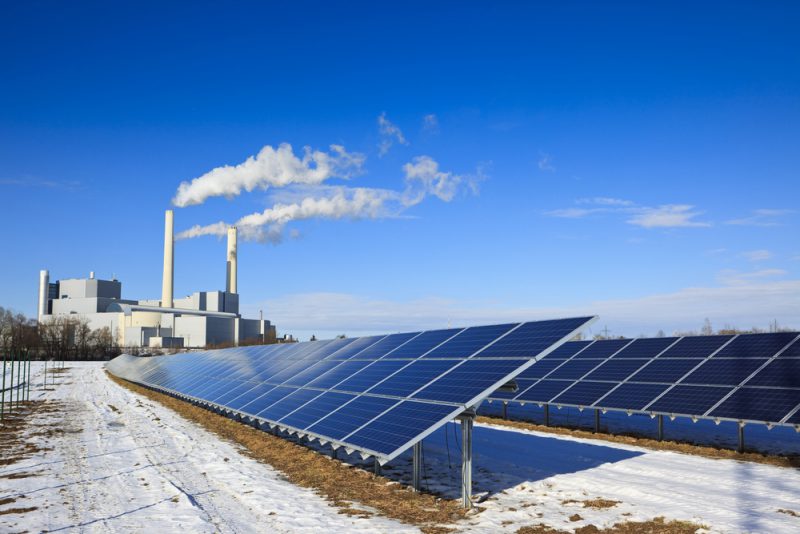Sandia National Laboratories competing to build high-temperature concentrating solar power pilot plant

Sandia National Laboratories announced yesterday that it will receive $10.5 million from the Department of Energy to research and design a high-temperature concentrating solar power pilot plant with built-in heat storage.
Sandia will lead one of three teams competing to build the system.
High-temperature concentrating solar power plants use mirrors to reflect and concentrate sunlight onto a receiver. The heat from the concentrated sunlight is either used immediately in a heat exchanger to generate electricity or stored for later use.
Current systems of this type can heat a substance to 565 degrees Celsius (C). This project aims to reach temperatures above 700 C, which would improve efficiency and reduce the cost of the electricity the system generates.
In the Sandia team’s proposal, ceramic particles absorb and store heat from concentrated sunlight. The project will refine Sandia’s high-temperature falling particle receiver and integrate it into the plant.
“We have demonstrated a prototype for the continuously circulating falling particles, and now we are adding six hours of storage, a one-megawatt heat exchanger and a particle lift to demonstrate the entire thermal system,” Cliff Ho, Sandia’s lead engineer on the project, said. “We believe particles are the best option for going to higher temperatures for advanced power cycles. The particles are inexpensive, durable and non-corrosive. They can be stored directly, they don’t freeze, and they can reach temperatures over 1000 C.”
The first phase of the two-year project will involve designing and evaluating the proposed plant as well as working to mitigate risks related to falling particle and concentrating solar power technology.
In the second phase, the team will provide DOE with a proposal detailing the final concept for its proposed pilot plant, as will the other two teams. DOE will choose one group to receive up to $25 million for the third phase of the program, in which they will construct and operate a pilot plant.
Sandia’s project partners include the National Renewable Energy Laboratory, Georgia Institute of Technology, King Saud University, Saudi Electricity Company, Commonwealth Scientific and Industrial Research Organisation, University of Adelaide, Australian National University, the German Aerospace Center (DLR), Electric Power Research Institute, Solar Dynamics, SolarReserve, Carbo Ceramics, Solex Thermal Science, Vacuum Process Engineering, Allied Mineral Products and others.
